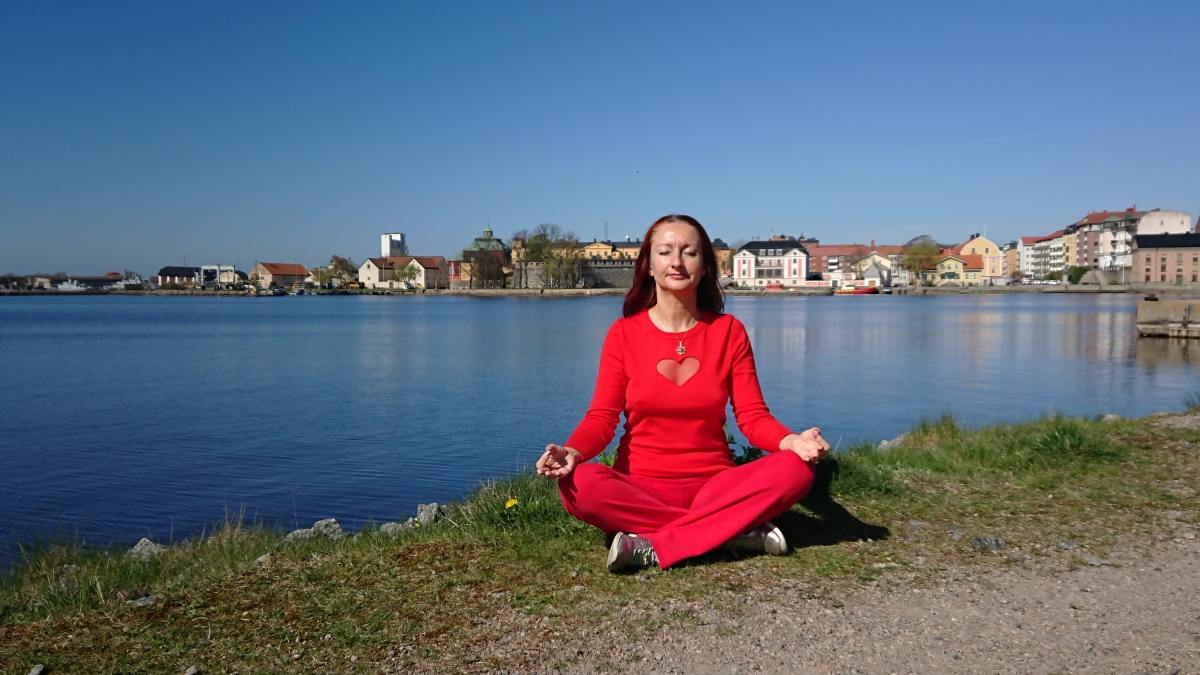Stress seems to be the epidemics of our time! But it does not have to be like this, because there are very simple and natural methods to increase our inner well-being and mental health!
Do this simple way to beat stress and help relieve symptoms of anxiety and depression. If you are into yoga, there is a practice you might already be doing, that has been shown to benefit people who suffer from mental illness. And even if you never tried yogic breathing techniques, you will probably fall in love with this one!

A study from 2016 that took place at the University of Pennsylvania found yogic breathing, a practice known as Sudarshan Kriya, helped
“alleviate severe depression in people who did not fully respond to antidepressant treatments,ˮ
and lessened symptoms, such as stress, associated with the mental illness.
Karusia Wroblewski, who teaches yogic breathing in her yoga classes at Toronto’s Yogaspace, said the technique has significantly improved the lives of both herself and her students.
“They have more energy and their outlook on life improves,” she said. “One student reported being able to cut back on anxiety medications. I just received a thank-you letter from a student who had suffered from deep depression, panic, anxiety attacks and insomnia.”
Yogic breathing is more than just slowed inhalation and exhalation; it requires a conscious effort in recognizing and regulating our breathing patterns by adjusting the speed, rhythm and volume of each breath. According to Wroblewski, we often neglect the importance of breathing because it is a natural process. She said injuries, stress and even strong emotions can affect “healthy breathing”.
Thankfully, for those who cannot make it out to yoga class, you can practice yogic breathing at home. It is entirely safe for beginners. I suggest, nevertheless, finding an experienced instructor if you want to practice intermediate or advanced techniques. introducing breathing techniques in our daily routine will improve not only our physical health, but also our mental health, as well. And this is a very valuable aspect for all of us, especially now.
Here is how to practice this simple breath work:
When: Do your best to practicing when you wake up in the morning, or at night right before you go to bed. It is recommended to do this type of breathing on an empty stomach, after at least two hours have passed after the meal. In this manner you make sure you will experience entirely beneficial effects.
Proper position: Start by lying on your back with a pillow under your knees and interlace your fingers, resting them on your abdomen. Close your eyes. Relax your entire body gradually, from toe to top. Let the tension in your body melt away.
The basics: Inhale gently through your nose, imagining a balloon inside your body slowly inflating. Exhale through your mouth while the air “escapes the balloon”. Control your breathing. Your breaths in and out should be smooth and almost silent. No effort is required.
While you are breathing, do your best not to dwell on your thoughts, just let them come and go, as if they were on a cloud floating by. Just ignore them.
Repeat the breaths three to four times, and then close your mouth while continuing to breathe through your nose. And this is it! Simple and yet very efficient! Practice it, because a gram of practice is worth tones of theory!
The light in me sees and loves the light in you!
Georgiana

